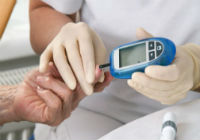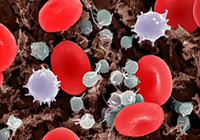Sugar level in the blood of a healthy person, the causes of high and low sugar.
Content
- How glucose appears in the blood
- Regulation of blood glucose level
- What will tell the level of blood glucose
Determination of blood sugar levels — One of the most common methods of laboratory research. What can tell this analysis, you can find out by reading the article.
How glucose appears in the blood

The fact that many are used to calling blood sugar is in fact only one representative of this extensive group — glucose. This carbohydrate provides a healthy body with more than 50%. This is his main and almost the only function. Most of the glucose enters the blood, absorbing from the intestine after cleavage of sucrose and other food carbohydrates. Some of its number immediately enters the disposal of the cells of the body, and the residue is prudently accumulated by the body in the liver and muscles in the form of a special substance — Glycogen. Due to its presence, our cells do not have a shortage of glucose between meals and at elevated loads. If it is necessary, glucose can also be synthesized from various substances: proteins, amino acids, dairy, peyrogradic acid and other non-reliable components.
Regulation of blood glucose level
The sugar concentration is maintained in the blood at a constant level due to the ability to convert the body to the organism excess glucose into glycogen, and with a deficit — Glycogen cleavage to glucose or synthesis of its irregular components. Regulated this process by various hormones. Insulin — Pancreas hormone, which stimulates the absorption of glucose cells of liver, muscles and adipose tissue, which causes a decrease in its blood level. The opposite effect is provided by a number of hormones of various organs: glucagon (pancreas), adrenaline, cortisol (adrenal glands), somatotropin, thyrotropin (pituitary), thyroxine, triiodothyronine (thyroid gland). Briefly increase the level of sugar may after eating, emotional experiences and physical work. Therefore, the analysis on glucose is given on an empty stomach, in the absence of workouts and stress.
What will tell the level of blood glucose
The normal level of sugar for children is considered to be 3.9-5.8 mmol / l (70-105 mg / dl), and for adults — 3.9-6.1 mmol / l (70-110 mg / dl). The yield of the concentration of glucose for the upper limit of the norm is called hyperglycemia, and for the lower — Hypoglycemia.
Causes of high sugar levels
Temporary hyperglycemia may be associated with food intake, physical exertion and stress. It does not represent danger and passes without external intervention. The most common disease that is accompanied by a constant increase in glucose levels is diabetes. But there are a number of other pathologies for which hyperglycemia — Symptom characteristic:
- damage to the central nervous system;
- improving the hormonal activity of the thyroid gland (thyrotoxicosis), adrenal glands (Cushing, Feochromocytoma syndrome), pituitary gland (acromegaly);
Causes of low sugar
As a normal phenomenon, the reduced level of glucose can be observed in pregnant women. After all, during this period in the body of a woman develops an active carbohydrate consumer. Hypoglycemia can also cause the following reasons:
 long starvation;
long starvation;- Violation of the absorption of carbohydrates (diseases of the stomach and intestines);
- chronic liver diseases;
- Hormonal adrenal insufficiency (Addison disease), thyroid gland (hypothyroidism), pituitary gland (hypontituitarism);









